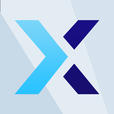h1 The Contract for Difference (CFD): A Modern Bridge to Diverse Markets
Introduction Trading from a coffee shop or living room used to feel risky, but CFDs—contracts for difference—made it practical to access a broad range of markets without owning the underlying asset. Today, CFD platforms blend traditional finance with web3 sensibilities: faster liquidity, smarter charting, and more flexible risk controls. Yet the appeal comes with responsibility. Understanding how CFDs work, choosing the right assets, and employing solid risk practices are essential for staying in control when prices swing.
What CFDs are and what you can trade A CFD is a derivative that mirrors the price movement of an underlying asset. You speculate on up or down moves, without taking ownership. The usual asset universe for CFDs includes forex, stocks, cryptocurrencies, indices, commodities, and even certain options-style exposures. Imagine trading USD/EUR, shares like Apple, BTC, the S&P 500, gold, or oil — all through one platform. This breadth lets traders hedge, diversify, or opportunistically target sectors without the friction of transferring ownership or waiting for settlement.
How CFDs work under the hood With CFDs, you put up a margin and stake a position on price movement. If the price moves in your favor, you earn; if not, losses accrue. Leverage lets you control larger exposure with a smaller margin, increasing both profit potential and risk. Prices are settled in cash, not by delivery of the asset, and daily settlement (mark-to-market) reflects current moves. The key idea: you’re betting on the move, not the asset itself, which makes rapid hedging and short-selling practical across asset classes.
Benefits and features you’ll notice
Important caveats and risk considerations Leverage is a double-edged sword. It can magnify gains, but it can also amplify losses beyond your initial margin. Liquidity gaps, slippage, and counterparty risk exist, especially in fast-moving assets or volatile events. Regulatory environments vary by region, and platform risk—glitches, outages, or poor risk controls—can affect outcomes. Always verify that your broker is reputable, uses segregated client funds, and provides transparent disclosures about fees and spread costs.
Reliability and smart trading practices
DeFi, web3, and the evolving landscape The web3 era is reshaping how CFDs sit alongside decentralized finance. Some projects experiment with synthetic assets and on-chain derivatives that mimic CFD-like mechanics, offering programmable risk controls and automated settlement via smart contracts. This opens new possibilities for cross-chain liquidity, transparent fee structures, and programmable hedges, but it also raises concerns about oracle risk, smart contract bugs, and liquidity fragmentation. Traders should balance the allure of decentralization with due diligence on security audits, governance models, and counterparty assurances.
Future trends: AI, smart contracts, and smarter trading Smart contracts could automate many CFD processes, from margin calls to dynamic risk pricing, while AI-driven signal engines provide faster, data-rich insights. Expect tighter integration between chart analysis, on-chain data, and risk controls, with more customizable risk models and adaptive leverage. Regulatory clarity will shape what’s possible in decentralized CFD-like products, but the direction is clear: more precision, more automation, and safer automation.
Taglines to keep in mind
Bottom line CFDs offer a practical path to diversify across forex, stocks, crypto, indices, options, and commodities with powerful tools, but they demand prudent risk management and quality choice of platform. In a world where web3 tech meets traditional markets, CFDs can be a catalyst for smarter, nimble trading—when you stay informed, stay deliberate, and pair ambition with safeguards.




